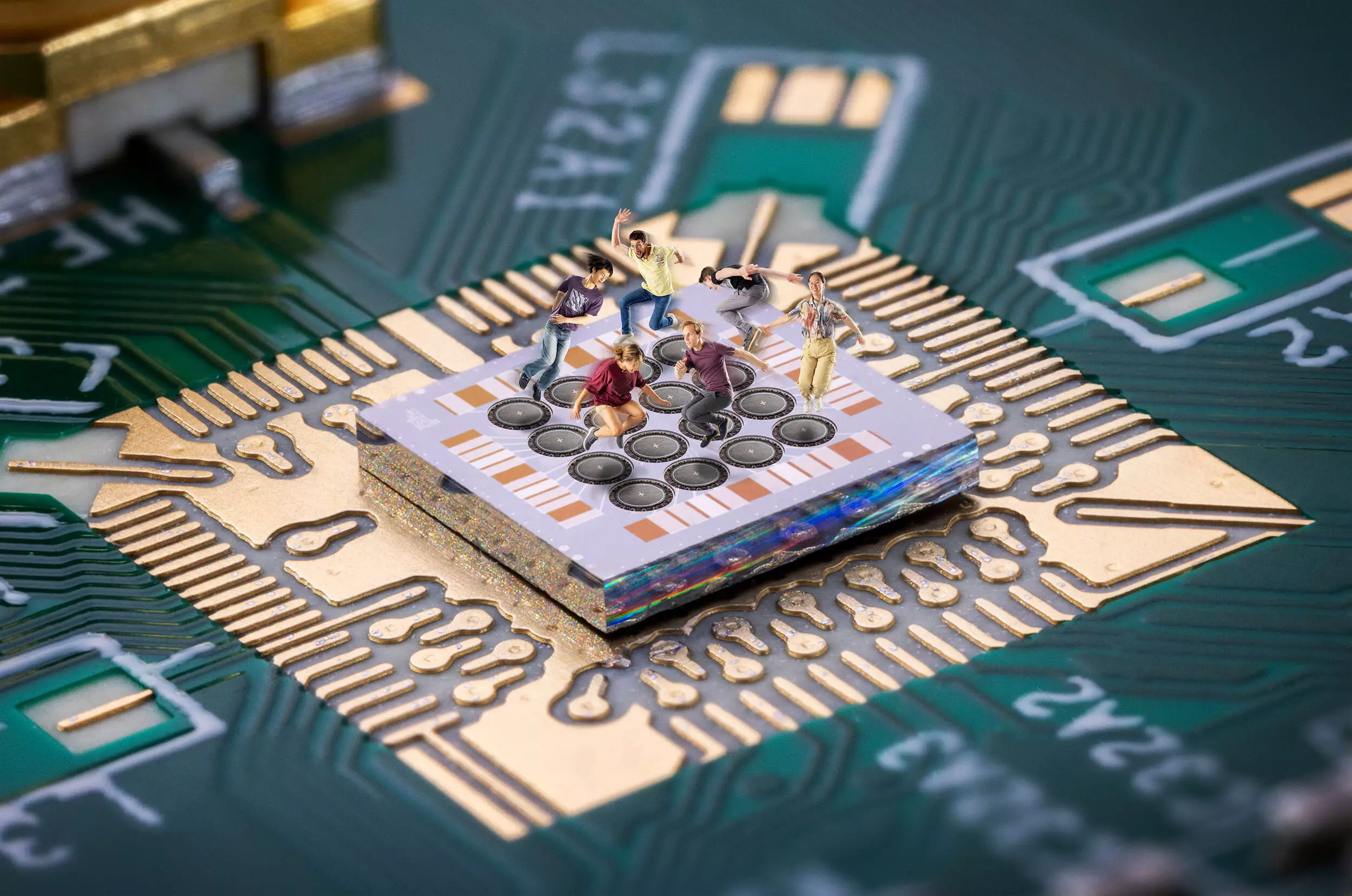In an exhilarating leap for quantum information science, researchers at QuTech, a collaboration between TU Delft and TNO, have pioneered the concept of somersaulting spin qubits that stands to redefine the landscape of quantum computing. This innovative work not only bridges over two decades of theoretical speculation that originated from the seminal 1998 paper by Loss and DiVincenzo, but it also promises a more efficient operational framework for large-scale semiconductor qubit arrays. The delight of seeing theoretical predictions manifest as practical applications can hardly be overstated, especially given the hurdles that have historically stymied experimental validation.
The Shift from Hypothesis to Experimentation
In their compelling publications in Nature Communications and Science, the QuTech team has demonstrated practical implementations of hopping spins—an experimental endeavor that had remained elusive for years. The concept of hopping spins proposed in Loss and DiVincenzo’s work initially hinted at a kind of qubit logic, but reaching this level of experimental fidelity was a long, arduous journey. Now, as if turning abstract science fiction into a tangible reality, QuTech’s state-of-the-art performance showcases that ‘hopping gates’ are not only achievable but come with significant advancements over the original proposal.
The significance of this development cannot be understated, as the prevalent framework for constructing quantum computers has largely revolved around trapping single electrons to utilize their spins as qubits. Traditional methods required high-powered microwave signals to manipulate these spins, a scenario fraught with complexity. However, the latest findings indicate that employing baseband signals coupled with small magnetic fields can suffice for universal qubit control, drastically simplifying the architecture of control electronics that quantum processors demand.
Innovative Use of Germanium
What is particularly impressive in this research is the strategic pivot toward using germanium as the foundational material. Rather than relying on the complex magnet setups that had previously confounded researchers, QuTech’s innovative use of germanium taps into its intrinsic properties, which facilitate natural spin rotations. This approach not only circumvents existing challenges but also leverages the material’s advantages, such as ease of manipulation and suitability for qubit interactions.
Flor van Riggelen-Doelman and Corentin Déprez, key contributors in this research, have also highlighted how germanium serves effectively for qubit hopping as they began to observe preliminary signs of spin rotations. Characterizing this phenomenology adds an exciting layer to the complexities of quantum computing, as it emphasizes the unique and sometimes unpredictable nature of spin behavior.
The Dynamics of Hopping and Somersaulting
To visualize the dynamics at work, one can imagine quantum dot arrays as an energetic trampoline park. Here, every electron spin represents an enthusiast bouncing about with the thrill of jumping and somersaulting across various trampolines. In this analogy, traditional hopping spins operate like jumpers content with sticking to one trampoline, whereas somersaulting spins embody an innovative technique that not only allows for lateral movement but also provokes rotational behavior.
Chien-An Wang, leading author of the impactful Science article, asserts the intricacies afforded by germanium, especially in the way it allows spins to align diversely across quantum dots. The outcome of this research has been extraordinary; the researchers reported error rates remarkably lower than one-thousandth for single qubit operations and below one-hundred for two-qubit operations—a promising indication that they have unlocked a secret formula for reliability in qubit coupling.
Building Complexity with Simplicity
The researchers didn’t stop at basic operations either. With a robust understanding of spin control in a four-quantum dot system, they explored the more complex interactions that emerge when spins engage across multiple dots. This intricacy parallels that of acrobats performing increasingly complex stunts; it raises the stakes significantly while simultaneously showcasing the exquisite capabilities of quantum systems.
By establishing control routines that navigate spin hopping within a ten-quantum dot array, the implications for probing key qubit metrics become vast. It opens the door to enhanced coupling and operational precision highs, a crucial factor for the sustainable development of large-scale quantum computers.
In reflecting upon this remarkable progress, principal investigator Menno Veldhorst aptly encapsulates the collective spirit of innovation at QuTech, noting the incredible teamwork that transformed speculative theories into powerful tools within the span of a year. The future of quantum logic appears not only hopeful but also increasingly realistic as researchers continue to push the boundaries of what quantum systems can achieve. Thus, as the world gazes into the heart of this technological revolution, one can only anticipate the waves that will follow in their wake.


Leave a Reply